Herniated Discs vs. Extrusions: A Detailed Overview


Intro
Herniated discs and extrusions are common spinal issues that can severely impact an individual's quality of life. Understanding these conditions requires a thorough examination of their definitions, causes, symptoms, diagnostic processes, treatment methods, and preventive strategies. This article provides a framework for assessing these conditions and offers insights into their implications for overall spinal health.
Key Concepts
Definition of Primary Terms
A herniated disc occurs when the soft inner gel of an intervertebral disc protrudes through a tear in the tougher outer layer. This displacement can press on nearby nerves, leading to pain and discomfort. Conversely, disc extrusion refers to a more severe type of herniation where the gel-like substance has completely escaped the disc, potentially affecting spinal stability.
Related Concepts and Theories
Both conditions share similar roots, typically arising from age-related degeneration, trauma, or repetitive stress and strain. It is essential to recognize that while these terms often appear interchangeable in casual conversation, their underlying mechanics and consequences vary significantly.
Educators and researchers continuously explore this differentiation to enhance treatment approaches and patient understanding.
"Understanding the distinctions between herniated discs and extrusions is crucial in tailoring effective treatment plans."
Herniation vs. Extrusion:
- Herniated discs may still retain some structural integrity while affecting nearby nerves.
- Extrusions often signify a more advanced condition, which might necessitate more aggressive management.
Future Directions
Gaps Identified in Current Research
Despite the existing knowledge, substantial gaps remain in understanding the long-term outcomes of both herniated discs and extrusions. Research often overlooks the psychological and social factors that contribute to recovery.
Suggestions for Further Studies
Future research should prioritize holistic methodologies that encompass physical, psychological, and social elements of these conditions. Investigating the efficacy of various treatment modalities, such as physical therapy, surgical options, and alternative treatments, could yield insights beneficial for patients and clinicians alike.
Foreword to Spinal Health
Spinal health is often an overlooked aspect of overall well-being. However, it plays a critical role in daily function and quality of life. The spine supports the body's structure and protects the spinal cord, which is vital for nervous system functioning. Understanding spinal health includes recognizing the importance of various spinal disorders, which can affect not only physical capabilities but also emotional and mental health. This article aims to elucidate the significance of spinal health by focusing on conditions like herniated discs and extrusions.
Importance of Understanding Spinal Disorders
The comprehension of spinal disorders is essential for multiple reasons. First, awareness can lead to early detection and intervention, which is crucial for successful treatment outcomes. For instance, many individuals might ignore early symptoms of a herniated disc, such as localized pain or discomfort. Understanding these conditions can prompt individuals to seek medical advice sooner rather than later, potentially preventing further complications.
Moreover, knowledge of spinal disorders supports better management strategies. Individuals equipped with knowledge about their conditions can engage meaningfully in discussions with healthcare providers. This involvement enables them to evaluate treatment options and make informed decisions about their health.
Additionally, understanding spinal disorders has broader implications for public health. The increasing rates of spinal health issues underscore the necessity for comprehensive education and preventive measures. According to some studies, a considerable portion of the population will experience back pain at some point in their lives, which can lead to long-term disability. Despite this, many remain uninformed about what may trigger such disorders or how they can mitigate associated risks.
Overview of Common Spinal Conditions
Spinal health encompasses a range of conditions, some of the most common being herniated discs, extrusions, spinal stenosis, and degenerative disc disease. Each of these disorders presents unique challenges and manages. Herniated discs involve the displacement of disc material that can press on spinal nerves, leading to pain and discomfort. This condition can result from a combination of aging, genetic predisposition, or lifestyle factors.
Extrusions are often confused with herniations, but imply a more severe displacement of disc material. Other conditions like spinal stenosis involve narrowing of the spinal canal, which can cause significant nerve compression. Understanding these conditions is essential because they share similar symptoms but arise from different physiological processes.
In summary, a solid foundation in spinal health characteristics allows for better recognition and management of various spinal disorders. This awareness is paramount as it not only enhances individual health literacy but also encourages proactive approaches to maintaining spinal wellness.
Defining Herniated Discs
Understanding herniated discs is essential in the broader context of spinal health. They are important because these discs play a crucial role in maintaining structural integrity and flexibility of the spinal column. A herniated disc can lead to severe pain, dysfunction, and can significantly affect a person's quality of life. It is critical to comprehend the definition, anatomy, and mechanisms involved, as this knowledge can empower individuals to take preventative measures and seek appropriate treatment. Furthermore, distinguishing this condition from other spinal disorders allows for more accurate diagnosis and targeted treatment strategies.
Anatomy of Intervertebral Discs
Intervertebral discs are vital components of the vertebral column. They are situated between the vertebrae and act as shock absorbers, allowing for flexibility and movement. Each disc consists of two main parts:
- Nucleus Pulposus: This is the inner gel-like center that provides cushioning and helps to absorb pressure. It is primarily composed of water and collagen fibers, which give it a unique structure that allows it to withstand compression.
- Annulus Fibrosus: This is the outer layer of the disc, made up of tough, fibrous cartilage. The annulus surrounds the nucleus pulposus and helps to secure it in place. Its layered structure provides strength and stability, enabling the disc to endure various forces acting on the spine.
When examining herniated discs, it is crucial to appreciate this basic anatomy. Discectomy, or surgical removal of herniated disc material, is a common treatment option.
Mechanism of Herniation
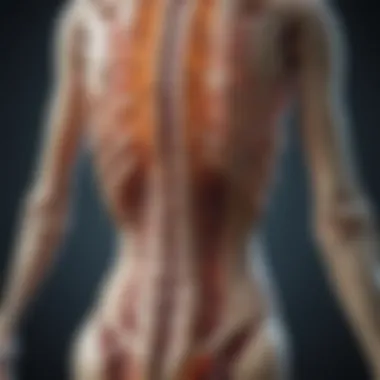
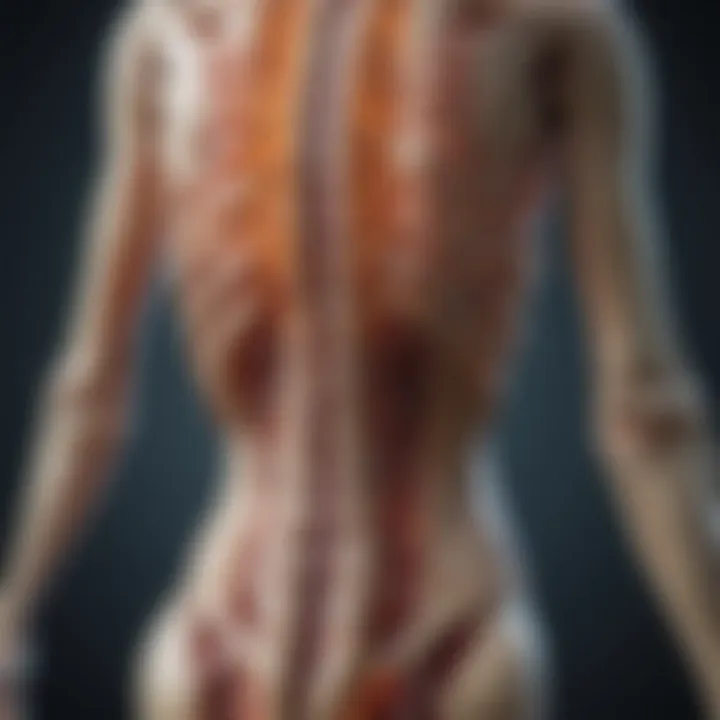
The mechanism of herniation involves various factors that can contribute to the displacement of the nucleus pulposus. A herniated disc occurs when the annulus fibrosus becomes weakened or damaged. This can happen due to:
- Age: As individuals grow older, the discs naturally lose hydration and elasticity, making them more prone to injury.
- Repetitive Stress: Activities that involve heavy lifting, twisting movements, or prolonged sitting can increase the risk of herniation.
- Trauma: Sudden injuries, such as falls or accidents, can also lead to disc herniation.
When the nucleus pulposus protrudes through the weakened area of the annulus, it can press against nearby spinal nerves. This can cause pain, numbness, or weakness in the affected area. Understanding this process is essential for both prevention and management of herniated discs.
"Knowing the anatomy and mechanism can elevate one's approach towards treatment and lifestyle adjustments, which may prevent further damage."
Overall, defining herniated discs is not just about grasping the medical concepts; it is about understanding their implications for spinal health and personal well-being.
Understanding Extrusions
Extrusions are a vital part of understanding spinal health, particularly when discussing conditions that affect the intervertebral discs. An extrusion refers to a specific type of disc herniation where the nucleus pulposus, the inner gel-like substance, protrudes through the outer annulus fibrosus. This distinction is important as it sets the stage for how extrusions might impact an individual’s health and treatment path. Recognizing the signs and implications of an extrusion can guide appropriate diagnosis and interventions.
The importance of understanding extrusions lies not only in differentiating it from other spinal conditions such as standard herniated discs but also in appreciating the potential health risks associated with this condition. Extrusions may lead to nerve compression and resultant pain, affecting a patient's quality of life. Awareness of this condition enables prompt medical response, which can prevent chronic pain development and preserve spinal integrity.
What Constitutes an Extrusion?
An extrusion occurs when the nucleus pulposus escapes from its usual confines within the disc, which is surrounded by the annulus fibrosus. This is typically categorized as a more severe form of disc herniation. During an extrusion, the outer layer remains intact, but the inner material extends beyond it into the spinal canal. This can cause significant pressure on surrounding nerve roots, leading to debilitating symptoms.
The clinical features of extrusions include:
- Location: Often found in the lumbar region but can occur in cervical or thoracic areas.
- Morphology: The extrusion can have varied shapes, depending on the extent and direction of bulging.
- Associated pain: Patients might feel localized pain or radiating sensations down a limb, indicating nerve involvement.
Such details about what defines an extrusion are crucial. They provide a framework for understanding the complexity of spinal injuries, which in turn informs treatment strategies.
Differences from Herniated Discs
Herniated discs are a broader category that includes any case where the disc material extends beyond its normal boundary. However, not all herniations are categorized as extrusions. The primary differences between herniated discs and extrusions can be outlined as follows:
- Extent of Material Displacement: Herniated discs may not always involve the nucleus pulposus breaking through the annulus, whereas an extrusion specifically does.
- Severity: Extrusions generally indicate a more severe displacement of disc material compared to non-extruded herniations.
- Nerve Impact: While both conditions can affect nerves, extrusions tend to cause more direct and severe compression.
Understanding these differences is crucial for diagnosing and managing spinal disorders effectively. Recognizing whether a patient is dealing with an extrusion versus a standard herniation can significantly alter the approach to treatment and recovery.
Causes of Herniated Discs and Extrusions
Understanding the causes behind herniated discs and extrusions is crucial for recognizing their potential impacts on spinal health. By identifying these underlying factors, individuals can take proactive steps toward prevention and management. This section will delve into three primary causes: genetic factors, environmental influences, and lifestyle choices. Each aspect plays a significant role in the development of these conditions, and awareness can lead to better health outcomes.
Genetic Factors
Genetic predisposition can significantly influence the likelihood of developing herniated discs or extrusions. Certain inherited traits affect the structural integrity of the intervertebral discs and spinal system. For example, families with a history of disc problems may pass down qualities that lead to weaker disc material or abnormal spinal mechanics.
It is important to consider the overall health of one’s family when assessing potential risk factors. Genetic markers may also indicate a higher susceptibility to degeneration of spinal structures. Individuals should be mindful of their family history in order to understand their own risk and seek early intervention when necessary.
Environmental Influences
The environment in which a person lives and works can also contribute to the risk of developing herniated discs and extrusions. Factors such as the ergonomics of one’s workplace, exposure to repetitive motions, and even the type of physical activities pursued can play a pivotal role in spinal health.
A physically demanding job that requires heavy lifting or excessive bending can strain the spine over time. Moreover, inadequate support while sitting for long periods can exacerbate disc issues. Studies show that workplaces promoting ergonomic solutions tend to witness fewer cases of spinal disorders. Thus, awareness of one’s environment and its potential risk factors is essential for prevention.
Lifestyle Choices
Individual lifestyle choices have a profound effect on back health. Habits such as smoking, sedentary behavior, and poor nutrition can all contribute to herniated discs and extrusions. Smoking, for instance, has been linked to reduced blood flow to the spinal discs, impairing their ability to heal and regenerate. This can increase the likelihood of degeneration and subsequent herniation of the discs.
Additionally, a lack of physical activity can weaken the muscles that support the spine, making injuries more likely. Regular exercise, balanced nutrition, and maintaining a healthy weight are fundamental components of a lifestyle that supports spinal health.
"Chronic poor habits can lead to conditions that might seem unrelated but are connected through the health of the spine."
Symptoms and Clinical Presentation
Understanding the symptoms and clinical presentation of herniated discs and extrusions is crucial for accurate diagnosis and effective treatment. Symptoms provide essential insights into the nature of the condition. They guide healthcare professionals in determining the appropriate course of action. Misinterpretation or negligence of these symptoms can lead to delayed treatment, resulting in a potential worsening of the condition. Recognizing early signs is invaluable for optimizing recovery.
Common Symptoms of Herniated Discs
Herniated discs often present with a specific set of symptoms. Patients typically experience localized pain in the affected area of the spine. This is generally more severe than pain not associated with a herniated disc. Pain can radiate to other areas, depending on the nerves involved. For instance, a herniation in the lower back may cause leg pain, also known as sciatica.
Additional symptoms may include:
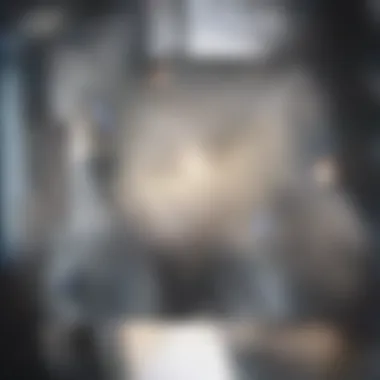

- Numbness or tingling in limbs
- Muscle weakness
- Decreased reflexes
- Changes in bladder or bowel control in severe cases
The type and intensity of symptoms will vary among individuals. Understanding the specific symptoms associated with herniated discs can help in distinguishing them from other spinal conditions.
Symptoms Indicating Extrusions
Extrusions may present symptoms that are somewhat different. An extrusion occurs when the inner gel-like core of the disc protrudes through the outer layer. This can lead to similar symptoms but with distinct variations. Extrusions might cause:*
- Sharp or burning pain
- More intense radiating pain than in typical herniated discs
- Increased numbness in specific areas, often more localized than herniated discs
- Severe weakness in the affected limb
Patients may also report changes in function, particularly if the extrusion compresses a nerve root. Prompt recognition of these symptoms is fundamental for distinguishing between herniated discs and extrusions.
Comparative Analysis of Symptoms
A comparative analysis of symptoms between herniated discs and extrusions sheds light on their nuanced differences. Both conditions share overlapping symptoms, such as pain and numbness. However, the intensity, nature, and specific areas affected can differ markedly. For instance, while both may cause leg pain due to lumbar disc issues, the burning sensation typically indicates an extrusion.
Key Point: Recognizing these subtle differences is critical. It has significant implications for treatment strategies and patient outcomes.
Additionally, the onset of symptoms in extrusions may be more acute compared to the often gradual presentation of herniated disc symptoms. This distinction can highly influence clinical decisions.
Diagnostic Approaches
A precise diagnosis is crucial in managing herniated discs and extrusions effectively. Understanding the specific characteristics of these conditions can guide clinicians in tailoring treatment approaches and improving patient outcomes. This section focuses on the significance of diagnostic methods, addressing their essential roles in distinguishing between the various spinal issues patients may face. Accurate diagnostic techniques ensure that patients receive appropriate care, minimizing the risk of complications and enhancing recovery.
Imaging Techniques for Diagnosis
Imaging techniques serve as fundamental tools in diagnosing herniated discs and extrusions. These methods enable healthcare professionals to visualize the spine, identify abnormalities, and determine the exact location and extent of any disc issues.
- Magnetic Resonance Imaging (MRI): MRI is often the preferred imaging modality. It provides detailed images of soft tissues, including intervertebral discs and the surrounding structures. MRI is non-invasive and does not use ionizing radiation, making it a safe option for many patients.
- Computed Tomography (CT) Scans: A CT scan can also be useful, particularly in cases where MRI is unavailable or contraindicated. It offers clearer images of bone structures and can reveal fractures or bony spurs that might contribute to herniation.
- X-rays: While X-rays do not show the discs themselves, they are useful for ruling out other potential issues, such as fractures or alignment problems in the spine. They can provide a general overview of the spinal health and guide further diagnostic steps.
These imaging methods aid in formulating an informed treatment plan based on the specific needs of the patient.
Clinical Evaluation Methods
In addition to imaging techniques, thorough clinical evaluation is indispensable. A structured clinical assessment involves detailed patient history and physical examination to gather more context around the symptoms experienced.
- Patient History: Understanding the patient's history helps identify risk factors, such as previous injuries or lifestyle habits, that may have contributed to their condition. Gathering information on when the symptoms began, activities that worsen them, and the patient’s overall health can provide significant insights.
- Physical Examination: A comprehensive physical exam often includes assessing reflexes, muscle strength, and sensory responses. Clinicians may utilize specific tests to reproduce symptoms related to herniated discs or extrusions. These tests might include:
- Straight leg raises to evaluate sciatic nerve involvement
- Neurological assessments to gauge the extent of nerve function impairment
Employing both imaging and clinical evaluation methods creates a well-rounded diagnostic approach, ensuring that patients receive an accurate diagnosis. Through effective assessment, healthcare providers can better tailor their treatment strategies to enhance patient care.
"Proper diagnosis sets the foundation for effective treatment and positive patient outcomes."
Accurate diagnostic approaches are essential in the realm of spinal health, especially concerning herniated discs and extrusions. A meticulous combination of imaging techniques and clinical evaluations lays the groundwork for understanding and managing these conditions.
Treatment Modalities
In the exploration of spinal health, treatment modalities serve as a critical focal point. The approach to managing herniated discs and extrusions is not a one-size-fits-all solution; rather, it requires an informed understanding of various treatment options that cater to the unique needs of each individual. This section will elucidate the range of available treatments and their significance in promoting recovery and enhancing quality of life.
Conservative Treatment Options
Conservative treatment options are often the first line of defense in managing herniated discs and extrusions. These approaches aim to alleviate pain and improve function without resorting to surgical interventions. Common conservative treatments include:
- Physical therapy: Tailored exercises enhance strength and flexibility, supporting spinal stability and relieving pressure on affected nerves.
- Medication: Non-steroidal anti-inflammatory drugs (NSAIDs) and muscle relaxants can reduce inflammation and alleviate pain, providing significant relief.
- Chiropractic adjustments: These manual therapies may help restore proper alignment and function of the spine.
- Epidural steroid injections: Administered directly to the affected area, these injections help reduce inflammation and pain, offering temporary relief.
While conservative options can be effective, their success often depends on patient compliance and the specific characteristics of the spinal condition. It is essential for patients to engage actively in their treatment process to maximize the potential benefits.
Surgical Interventions for Herniations
When conservative methods fail, surgical interventions may be considered as a next step. Surgical options vary greatly depending on the severity of the condition and the patient's overall health. Common procedures include:
- Discectomy: This involves the removal of the herniated portion of the disc, aiming to relieve pressure on nerve roots.
- Laminectomy: In cases where the spinal canal is narrowed, this procedure removes a part of the spinal bone to create more space for the nerves.
- Spinal fusion: Often performed after discectomy, spinal fusion involves joining two or more vertebrae to enhance stability and reduce the likelihood of further herniation.
Surgical options provide significant relief for many patients, yet they carry inherent risks and recovery considerations. Thus, it is essential for patients to have thorough discussions with their healthcare providers regarding the potential outcomes and long-term implications of surgery.
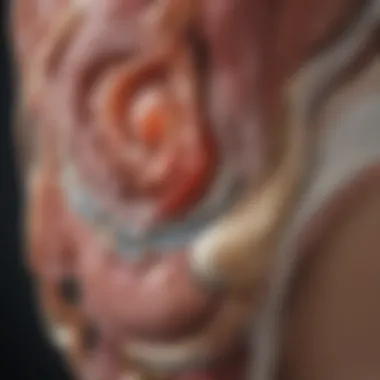
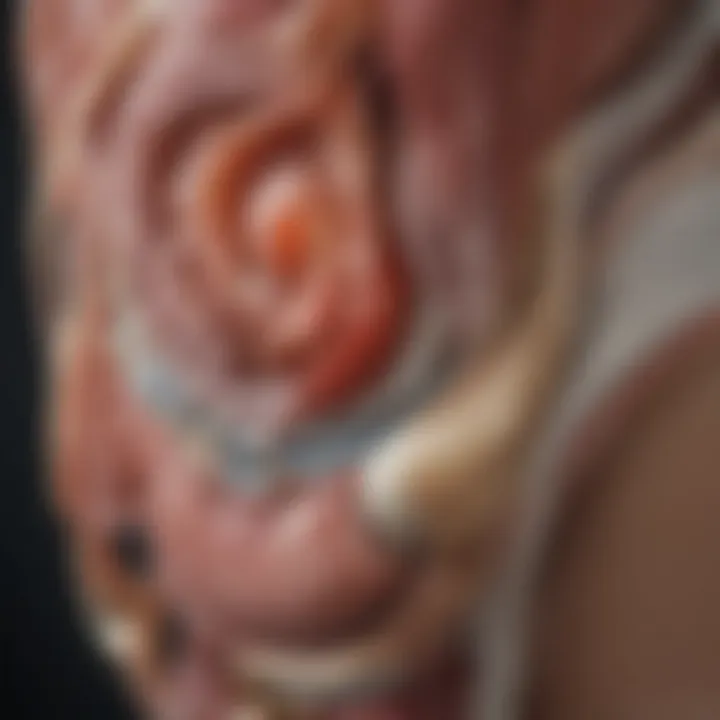
Surgical Considerations for Extrusions
Extrusions represent a more complex challenge compared to simple herniations. The surgical consideration for extrusions often requires tailored strategies. Important considerations include:
- Assessment of nerve involvement: Surgeons must evaluate whether the extrusion has caused nerve damage, influencing the urgency and type of surgical approach.
- Potential for conservative treatment success: If conservative treatments show promise, surgery may be postponed, necessitating careful monitoring of symptoms.
- Patient-specific factors: Age, overall health status, and individual lifestyle choices necessitate an individualized surgical plan to optimize outcomes.
Surgical interventions for extrusions often require a delicate balance between the need for immediate relief and the long-term health of the spine.
Attention to these factors can improve surgical success rates and ensure a more favorable recovery trajectory.
Prognosis and Outcomes
Understanding the prognosis and outcomes of herniated discs and extrusions is vital for patients and healthcare professionals alike. This section addresses how these conditions can unfold over time, emphasizing their long-term implications on spinal health and quality of life. Knowing what to expect can aid in better management and decision-making regarding treatment options. The insights gained here are essential for developing effective preventive strategies and tailoring care plans that meet the specific needs of those affected.
Long-term Prognosis for Herniated Discs
Herniated discs typically show a varied long-term prognosis depending on numerous factors including location of the herniation, the age and health status of the patient, and the chosen management approach. Recent studies suggest that many individuals experience a significant reduction in symptoms over time, particularly with conservative treatments like physical therapy, medication, and changes in lifestyle.
- Recovery Duration: Most people observe marked improvement within a few weeks to several months. However, some patients may continue to experience intermittent pain or discomfort for years.
- Functional Outcomes: Generally, the majority regain normal functionality and can return to their daily activities, although some may require ongoing management strategies to maintain this level of performance.
- Surgery Considerations: In cases where conservative treatment fails, surgical options may provide relief. However, surgery does not guarantee complete recovery and comes with its own risks and considerations.
What to Expect with Extrusions
Extrusions often present a different set of challenges compared to traditional herniated discs. These conditions can lead to more severe symptoms due to their nature, where the nucleus pulposus is displaced beyond the normal confines of the disc.
- Severity of Symptoms: Patients with extrusions may experience more intense pain and neurological symptoms like numbness or weakness due to compression on nearby nerves. These symptoms can have a substantial impact on day-to-day life.
- Prognosis Variability: The long-term outlook for those with extrusions is influenced by the extent of the extrusion as well as the effectiveness of the initial treatment. While some extrusions resolve without intervention, others may persist and necessitate further evaluation.
- Continuing Symptoms: Reports indicate that individuals struggling with extrusions can experience prolonged discomfort even after initial treatment, necessitating chronic management approaches.
"Knowledge of prognosis and expected outcomes plays a crucial role in the empowerment of patients, allowing them to engage actively in their treatment journey."
In essence, understanding the prognosis and outcomes of both herniated discs and extrusions aids in preparing patients for the path ahead and forming a more holistic plan for recovery.
Preventive Strategies
Preventing herniated discs and extrusions is critical for maintaining spinal health. These conditions can lead to significant discomfort and mobility issues. By focusing on prevention, individuals can reduce their risk of developing these conditions. Multiple strategies come into play, which include lifestyle adjustments and ergonomic enhancements. Understanding these can empower individuals to take control of their spinal health.
Lifestyle Adjustments to Prevent Herniation
Lifestyle plays a significant role in the health of the spine. Making certain changes in daily habits can greatly reduce the likelihood of herniated discs.
- Weight Management: Maintaining a healthy weight is essential. Extra pounds put additional stress on the spine. Weight loss through balanced diet and regular exercise can make a significant difference.
- Physical Activity: Engaging in regular physical activities strengthens back muscles. Activities such as swimming or walking can help maintain flexibility and stability in the spine.
- Posture Awareness: Poor posture can contribute to disc problems. Being mindful of posture while sitting or standing can prevent undue strain on the back. Setting reminders or using posture-correcting devices can provide support.
- Stretching and Strengthening Exercises: Simple stretching routines strengthen the muscles that support the spine. Incorporating flexibility exercises, like yoga, can enhance spinal health.
Implementing these lifestyle adjustments can offer long-term benefits. Strong and flexible muscles help to protect the spine from injury.
Ergonomic Enhancements to Reduce Risk
Ergonomics is crucial in reducing the risk of herniated discs and extrusions, especially in workplaces. Proper setup and equipment can lead to better spinal health.
- Workplace Design: Ensure that workstations are designed with ergonomics in mind. Desks should allow for a neutral wrist position while typing. Adjustment chairs that offer lumbar support minimize back strain.
- Device Usage: When using phones or tablets, it is important to keep the device at eye level to prevent forward head posture. This reduces strain on the neck and spine.
- Frequent Movement: Schedule regular breaks throughout the day. Getting up to stretch or walk can reduce the risk of muscle fatigue and tension in the spine.
- Proper Lifting Techniques: Use the legs when lifting heavy objects. Bending at the knees and keeping the object close to the body reduces pressure on the spine.
Ergonomic enhancements in daily life are not just a strategy; they are an investment in one’s overall health. They contribute to creating a supportive and healthy environment for the spine.
Key takeaway: Prevention is an essential aspect of spinal health. Lifestyle and ergonomic adjustments can create significant benefits.
Culmination
The conclusion serves as a pivotal component of this article. It is where insights crystallize and reinforce the understanding of herniated discs and extrusions. By summarizing the critical themes explored, readers can better appreciate the complexities surrounding spinal health. This section emphasizes not only the distinctions between these conditions but also the broader implications for patient care and rehabilitation.
Understanding herniated discs and extrusions contributes to informed decision-making regarding treatment options and lifestyle choices. Keeping abreast of effective preventive measures enhances quality of life and may mitigate the risk of future spinal issues. Moreover, recognizing the significance of these spinal conditions encourages ongoing dialogue within the medical community, potentially leading to improved patient outcomes.
Summary of Key Insights
This article has delved into various aspects of herniated discs and extrusions. The anatomy and mechanics behind herniation were thoroughly examined, highlighting how these conditions develop and their respective characteristics. The causes were linked with genetic predispositions, environmental factors, and lifestyle choices, emphasizing a holistic understanding of risk factors.
Furthermore, we explored clinical symptoms and diagnostic approaches, equipping readers with knowledge on how to identify these conditions accurately. Various treatment and preventive strategies highlighted the importance of an integrative approach to spinal health. Ultimately, knowledge empowers individuals to take control of their health regarding these common yet often misunderstood spinal disorders.
Future Directions in Research
Research into herniated discs and extrusions is ongoing, with potential advancements on the horizon. Future studies may focus on the molecular mechanisms of disc degeneration and herniation, opening new avenues for therapeutic interventions. The role of emerging technologies, like regenerative medicine, could also be pivotal in enhancing treatment effectiveness and reducing recovery times.
There is also a need for more comprehensive population-based studies that explore long-term outcomes of various treatments. Understanding psychosocial aspects linked with these conditions can help tailor rehabilitation programs for improved efficacy. Ultimately, a multidisciplinary approach to research could facilitate a deeper understanding of spine health and continue to inform clinical practice.
In summary, the study of herniated discs and extrusions not only enriches our knowledge of anatomy but also reveals essential strategies for prevention and treatment, underscoring the importance of continued exploration in this field.
For additional information, you can refer to Wikipedia, Britannica, and discussions on Reddit.



